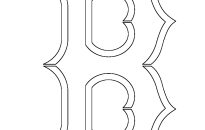The new exhibition at the Pop Cult Museum within PD’s Hot Shop in Qualicum Beach showcases the journey of skateboarding over the years, beginning with primitive handmade boards from the 1930s up until today. Wheels of Freedom charts the progress of skate culture alongside the boards themselves — exploring how advancements in technology modify the sport […]


The new exhibition at the Pop Cult Museum within PD’s Hot Shop in Qualicum Beach showcases the journey of skateboarding over the years, beginning with primitive handmade boards from the 1930s up until today.
Wheels of Freedom charts the progress of skate culture alongside the boards themselves — exploring how advancements in technology modify the sport and are influenced by it in return.
Although commercial boards began appearing in the marketplace in the late 1950s, youngsters had already been crafting their own skateboards for many years prior.
“Typically, a boy in the family would occasionally find himself in a bit of trouble after he effectively borrowed his sister’s roller skates or seized his own,” recounted owner Peter Ducommun, known simply as PD. “What they would do was take apart the roller skate and put together parts on a wooden plank.”
Skateboarding developed by imitating surfing and was once dubbed “sidewalk surfing,” but by the mid-1960s, it began to emerge from surfing’s influence, highlighted by Patti McGee gracing the cover of Life magazine in 1965 (a copy is part of the exhibit).
For numerous kids, a skateboard or bicycle represents that initial sense of independence — the ability to explore further from home without parents nearby.
Yet, this freedom also attracted criticism from society — individuals upset with skateboarders for riding on sidewalks or trespassing by skating on the sloped walls of abandoned pools.
“In the beginning, we were told it was not right and that we were misbehaving,” Ducommun noted, who started skateboarding in the early 1970s. “When you inform someone, particularly a young individual, that they are doing something wrong, and they know they’re not, it only makes them want to do it more.”
Broader skateboards gained popularity in the 70s for better stability as skaters turned their focus towards riding up and down pool sides.
“We understood that a swimming pool felt akin to riding a wave, going up the wall and coming down,” Ducommun explained. “That inspired what eventually turned into half pipes and skate park bowls, among others.”
One of the highlights of the exhibit is Ducommun’s original board from 1976, identifiable by a yin yang sticker — the logo for Great North Country Skateboards, before it rebranded itself as Skull Skates, Canada’s longest-standing skateboard brand.
Humor, irreverence, and satire became integral to skate culture, Ducommun mentioned, with one way this was manifested being through skateboard stickers.
“As skateboarders, we have a penchant for mockery,” he stated. “Bright colors and cheerful faces, but with an undertone of humor.”
A notable piece in the exhibition critiques the notion of skateboarders competing for accolades, including the recent addition of skateboarding to the Summer Olympics. Ducommun creatively placed a decapitated doll’s body atop a football trophy, with a skateboard wheel serving as the head.
“It’s more about a form of art or a way of life,” he remarked.
Skateboarding continues to transform and develop as fresh cohorts of skaters come onto the scene.
“Each time it seems it can’t get any wilder in terms of tricks, techniques, and riding styles, it does,” Ducommun asserted. “The reason for this is that people aren’t starting from scratch; they’re building on everything that’s come before.”
With plans underway for a new skatepark in Qualicum Beach, Ducommun is hopeful that the activity will persist in expanding and may even draw visitors to the town to experience the new venue.
“There’s a whole community eager to come out and embrace it.”
Wheels of Freedom will be hosted at the Pop Cult Museum until March. PD’s Hot Shop is situated at 164 Second Ave.














